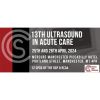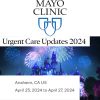ICU Management & Practice, Volume 21 - Issue 2, 2021
Patients and their families often fear surgical interventions due to possible complications during the procedure and falsely assume to have survived the most dangerous part when reaching post-anesthetic care units.1 However, postoperative hypotension more often occurs in the wards, causing myocardial infarction and death,3,4 as it largely remains undetected.5 47% of postsurgical hypotensive events are missed due to doing only blood pressure spot-checks.6
These alarming facts have a substantial impact on healthcare budgets: representing the third leading cause of death in the world4, postsurgical complications can increase costs by +172%,7 due to complication rates ranging up to 27%8 and mortality of up to 12%7 in postsurgical patients.
Only recently, experts have confirmed the high potential of reducing risks and costs of postoperative complications by extending continuous hemodynamic monitoring throughout the hospital stay. While already successfully implemented during surgery to guide Goal Directed Therapy9, 10, 11 also for low and medium-risk surgeries, to date, continuous hemodynamic monitoring is poorly implemented on surgical wards.
Hypotension remains undetected6 and patients’ deterioration is often overlooked3, as blood pressure is usually measured only every 4 to 6 hours. Patients are supposed to get up from their beds and move around in due course after surgery, therefore wireless technologies such as wearable sensors are needed5, preferably providing wearing comfort at low costs, due to the large patient population.

Only recently, CNAP®2GO, a new innovative sensor concept for measuring blood pressure and other vital signs using a wearable finger ring, has been introduced in the NATURE Communications Journal. With its wireless setup and high wearing comfort, CNAP®2GO seems able to address all major demands on the wards. Clinical accuracy against invasive reference standards showed comparable results to its parent technology - CNAP® - for perioperative hemodynamic monitoring.2
With this ongoing development, CNSystems strives for a new tailor-made solution, covering the whole cycle of hemodynamic monitoring throughout the hospital stay of a surgical patient. All CNAP®solutions feature an easy and fast setup and well-founded clinical validation and are already established common practice. - THE FUTURE IS WEARABLE! 
References:
1. Sessler DI, Saugel B (2019) Beyond ‘failure to rescue’: the time has come for continuous ward monitoring. Br. J. Anaesth. 122, 304–306.
2. Fortin J et al. (2021) A novel art of continuous non-invasive blood pressure measurement. Nat. Commun. 12, 1–14.
3. Sessler DI et al. (2018) Period-dependent Associations between Hypotension during and for Four Days after Noncardiac Surgery and a Composite of Myocardial Infarction and Death: A Substudy of the POISE-2 Trial. Anesthesiology 128, 317–327.
4. Michard F, Biais M, Lobo SM, Futier E (2019) Perioperative Hemodynamic Management 4.0. Best Pract. Res. Clin. Anaesthesiol. doi:10.1016/j.bpa.2019.04.002.
5. Michard F, Scheeren TWL, Saugel B (2020) A glimpse into the future of postoperative arterial blood pressure monitoring. Br. J. Anaesth. 125, 113–115.
6. Turan A et al. (2019) Incidence, Severity, and Detection of Blood Pressure Perturbations after Abdominal Surgery. Anesthesiology 130, 550–559.
7. Manecke GR, Asemota A, Michard F (2014) Tackling the economic burden of postsurgical complications: would perioperative goal-directed fluid therapy help? Crit. Care 18, 566.
8. de la Plaza Llamas R et al.(2021) The Cost of Postoperative Complications and Economic Validation of the Comprehensive Complication Index: Prospective Study. Ann. Surg. 273, 112–120.
9. Stokes SM et al. (2020) Hospital Costs Following Surgical Complications: A Value-driven Outcomes Analysis of Cost Savings Due to Complication Prevention. Ann Surg (2020) doi:doi: 10.1097/SLA.0000000000004243. Online ahead of print.
10. Healy MA, Mullard AJ, Campbell DA, Dimick JB (2016) Hospital and payer costs associated with surgical complications. JAMA Surg. 151, 823–830.
11. Sessler DI et al. (2019) Perioperative Quality Initiative consensus statement on intraoperative blood pressure, risk and outcomes for elective surgery. Br. J. Anaesth. 122, 563–574.
12. Messina A et al. (2021) Association between perioperative fluid administration and postoperative outcomes: a 20-year systematic review and a meta-analysis of randomized goal-directed trials in major visceral/noncardiac surgery. Crit. Care 25, 1–14.
13. Benes J et al. (2015) Continuous non-invasive monitoring improves blood pressure stability in upright position: randomized controlled trial. J. Clin. Monit. Comput. 29, 11–7.
14. Song J, Chen H (2019) Efficacy of Goal-Directed Fluid Therapy Monitored by Pulse-Pressure Variation Using a C ontinuous Non- Invasive Arterial Pressure Monitoring System ( the CNAPTM System ) During Parathyroidectomy in Patients with End-Stage Renal Failure - A randomized tria. Res. Sq. 1–30. doi:10.21203/rs.2.10803/v2.
15. Stenglova A, Benes J (2017) Continuous Non-Invasive Arterial Pressure Assessment during Surgery to Improve Outcome. Front. Med. 4, 1–8.




















